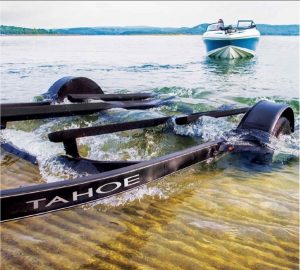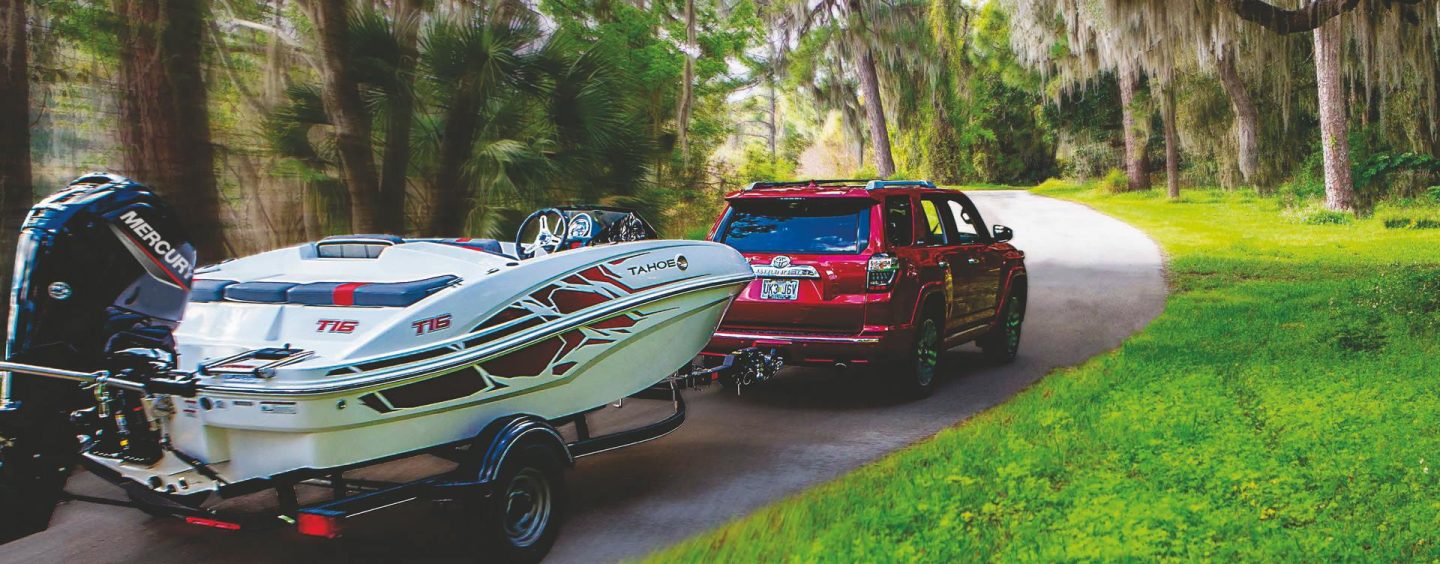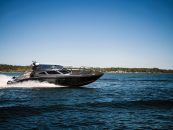Whether on the boat ramp, or on the road, anyone who is dependent on regularly hauling a boat knows about the many pitfalls and subtleties involved in dealing with a bulky trailer. According to the old maxim: practice makes perfect, however, before undertaking that practice, untrained boat owners should take note of some essential advice from our insurance experts.
In principle, any vehicle with a designated trailer load is suitable for safely towing a loaded boat trailer, provided it falls within specifications. The maximum trailer load will be listed in the vehicle’s manual, or even on the vehicle itself, and should be carefully checked before any planned transport or slip operation. Towing terminology should be understood, and you should be aware of the exact weights on your car, boat, and trailer, and the maximum capacity of each. Some vehicle manufacturers specify towing speed limits, and there may be special limits designated in some states.
In all states and territories, the maximum trailer (including load) width is 2.50m. Above 2.50m an oversize sign is required and, in some cases, an escort vehicle. This is usually fine for Australian made boats, however boats manufactured for the USA market usually have a 2.59m beam, requiring them to be treated as oversize trailer loads. When towing an oversize trailer, the rules are more complicated, so check online for details of signs to be displayed and the flags required.
Additionally, lights must be on during the day and, at night in Queensland, a yellow rotating warning light must be displayed. Also in Queensland, the maximum speed limit when towing an oversize boat is 90km/h outside built-up areas. There are restrictions on when you are permitted to tow in certain areas, so again check online for details. If you are planning to tow a large or oversized boat across borders, you should have a thorough understanding of the rules and regulations for the areas and states that you will travel through.
Regulatory compliance will be useless if the size of your vehicle and boat trailer (team) simply overtaxes the existing route infrastructure. Damage caused by low bridges, tunnels, or even low hanging tree branches is unfortunately not an uncommon experience when transporting boats and yachts. Precise planning of the transport route should be carried out for longer journeys. Another important consideration when towing a boat trailer is the effect on the tow vehicle. The larger the boat to be transported, the greater the impact on the driving behaviour of the tow vehicle. Getting to know the driving and braking behaviour of the team early, say on a quiet road, can greatly improve your safety when confronted with similar situations in heavier traffic.
Before loading a trailer with a boat, the brakes should be checked and tested, as they often become stuck, especially if the parking brake has been applied for a long period of time. For trailers that are exposed to water – especially salt water – while launching, it is advisable to drive the brakes “dry” afterwards, as corrosion attacks the brake system.
Before approaching a boat ramp, check the ground and ensure that your vehicle will have sufficient grip. How far you can drive the trailer into the water depends on the nature of the ramp. In general, you should try to get the trailer as deep into the water as possible to facilitate the launch process, but try to avoid wetting the trailer’s electrical sockets, or your vehicle becoming partially submerged, especially the rear axle. If the vessel is loaded onto the trailer, make sure that the strap pads are made of a material that can dry off quickly when it rains or that drains off the water. The reason being that moist coatings can lead to osmosis on unprotected fibreglass hulls in the long term.
For trailers that do not have a bow support, it is important to secure the vessel against forward movement. In addition, loose parts such as biminis, masts, hatches, and rudders must be securely lashed so that they do not break free during the trip and endanger other road users. If the mast protrudes more than one metre beyond the trailer, it must be marked using something like a red cloth during the day, or with a light in the dark. Before you start, check the lighting system to ensure that the plug is properly connected to the towing vehicle, and that the contacts are not dirty or corroded. Also, if your vision to the rear is impeded, you should think about buying extended exterior mirrors, as is usual with caravan trailers.
Of course, it is not possible to sufficiently cover all the necessary steps for safe boat trailer driving in this brief article. Those who have unresolved questions should ask their boat dealer for first launch procedure assistance, or seek training from a professional boat service provider.
Published in print July-September 2021



























